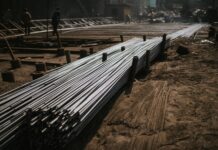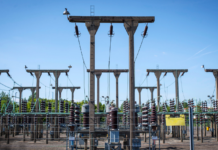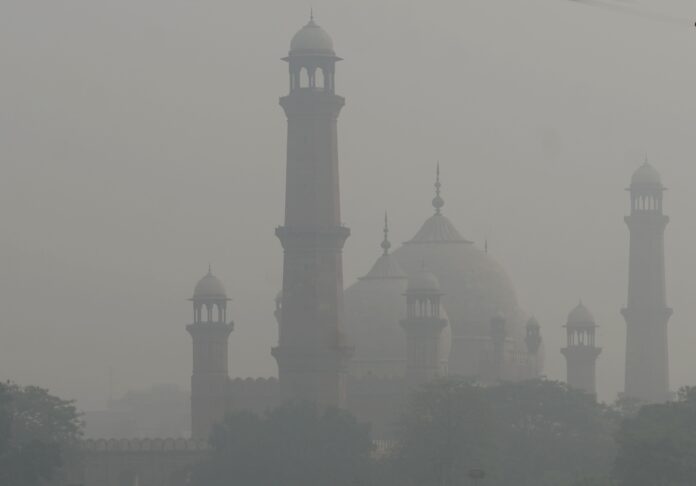Nawaz Sharif has long been a believer in normalising diplomatic and trade ties with India. He is perhaps the only major political figure in Pakistan openly advocating for better relations with India.
So it was not particularly surprising when his daughter Maryam Nawaz, also incidentally the chief minister of Punjab, expressed an interest in pursuing better India-Pakistan relations by reaching out to her Indian counterpart.
What was just a little confusing was why she reached out to the Chief Minister of Indian Punjab over the issue of air pollution. Lahore is currently engulfed in a blanket of toxic air the likes of which has not been seen since 2016 when the issue of smog first visibly emerged in the city. It is not just the capital of the province that is struck. Faisalabad, Sahiwal, Sialkot, and a number of other cities are facing the same problem. It is a problem that extends beyond Pakistan, and is felt acutely in South Asia.
In 2023, Bangladesh recorded the worst air quality of 134 countries monitored by the Swiss climate group, IQAir. Pakistan and India were close behind, with the report showing that South Asia suffers from the worst pollution in the world overall. But the smog issue is India is most felt far away from Punjab, with New Delhi and the Haryana region much bigger problem areas than Indian Punjab.
So why would Maryam Nawaz’s counterpart be interested in helping her tackle a problem that is affecting the other side of the border? Why would he want to ban crop burning in his province, possibly upsetting his rural votebank, when it will not do him much good? The answer is he most likely is not. Which is probably why there has been no response from Chandigarh.
The idea of climate diplomacy is well and good. The issue is it is not the best approach to dealing with a problem that has become life-and-death for anyone living in Lahore. Smog is actually a very simple problem to understand and cure. Many cities around the world have done it for a very long time, and there is a roadmap. So what is it?
Understanding the scale of the problem
Allow us to begin with an exercise in contextualisation. It is easy to become desensitised if you live in Lahore. Just last week, the Air Quality Index (AQI) in Lahore crossed 1600 in some areas. The World Health Organisation considers an AQI of over 100 to be a risk to health for sensitive groups such as children, the elderly, and those with chronic respiratory illness.
And that is just a number. Think of it this way. Back in June 2023, wildfires broke out in Canada close to the American border, and winds blew south and got trapped in New York City. For a period of 3-4 days, the Big Apple became the most polluted city in the world, a title currently held by Lahore. This event, which was temporary and had a very definite external root, caused panic in the city. Authorities distributed a million N-95 masks for free, the Mayor called an emergency, and residents were advised to stay indoors until the wave passed. What was the AQI during this entire time? At its worst, it hit a high of close to 250. That is a number that would be considered a very good day in Lahore at this point.
This desensitisation is exactly why it is worth more closely understanding what the smog is. The first thing to understand here is that the air quality in Lahore isn’t just bad in the winter months. It is bad all year around. According to the Environmental Protection Department (EPD) of Punjab, the ambient air quality of the capital city Lahore in the year 2022 revealed that there were only 17 days of good or satisfactory AQI (PM2.5) out of the total 309 monitored days.
The air we breathe in contains particulate matter — small, microscopic bits of different substances. Particulate matter that is less than 10 microns (for context, one micron one-thousandth of a millimetre) in diameter is inhalable by the human lungs. And once these very small particles are inside your lungs in enough quantities they can cause adverse health effects.
Now imagine that the air we breathe every single day contains these particles that are less than 10 microns. With every single breath you take there is poison entering your lungs. And it gets worse. You see, 10 microns or a particulate matter reading of “PM 10” is already bad for you. But when the particulate matter gets to a value of 2.5 microns or less (which is what we refer to when saying PM2.5) is categorised as “Fine Particulate Matter.”
Now the more Fine Particulate Matter you have in the air, the worse your air quality is. And this amount of particulate matter is constant throughout the air. In the winter months, however, a thin layer of the atmosphere near the earth becomes cooler than that above it. As a result pollutants are trapped at ground level until there is a change in the weather.
So this is what you have. Lahore as a city and Punjab at large is producing toxic fumes and throwing them into the air every single day of the year. For most of the year they do not notice just how adversely this affects them. But for a quarter of the year stretching from at least November to January, the cold air traps these toxic fumes turning the province into a deadly hot-box of disease. During these months the smog’s threat to health and life is worse.
The effects are clear.
According to a report of the World Health Organisation (WHO), the exceeding levels of air pollution have resulted in the loss of 5.3 and 4.8 years of life expectancy from 1998-2016 among populations of Lahore and Faisalabad cities, respectively. The rate of deaths attributable to air pollution (including indoor PM2.5, and ozone) in Pakistan is also well above global averages. The World Bank estimates Pakistan’s annual burden of disease from outdoor air pollution to be responsible for around 22,000 premature adult deaths.
The source of the poison
Punjab’s smog problem is entirely the creation of years of neglect and bad policy implementation. And it is human-made in a very direct way. A lot of the environmental issues faced by the global south in today’s day and age are caused by emissions from the global north. According to the Center for Global Development, developed countries are responsible for 79% of historical carbon emissions. Yet studies have shown that residents in least developed countries have 10 times more chances of being affected by these climate disasters than those in wealthy countries.
But the smog problem is entirely removed from this reality. Instead it is a bit of a localised environmental disaster. The air quality in and around Lahore and the other districts of Punjab is bad because of pollutants within. The fine particulate matter in the air is high because it is released from automobiles, industrial units, and the burning of crops.
The data on what causes the smog is limited but the information available is quite clear. The main work on this is a 2018 study conducted by the Food and Agriculture Organisation (FAO). The study found that the main polluting sectors include transport at 43%, factories and industrial burning at 25%, agriculture at 20%, and power at 12%.
Cars:
The most obvious pollutant is the transport sector. When it comes to smog this is the big bad wolf everyone talks about. And the data is quite clear. Air quality in Punjab from 1998 to 2023 has fallen consistently. Over this same 25 year period, the increase in the number of vehicles on the road has been astronomical. According to a government report, while private transport rose by 332%, public transport increased by only 165% and road networks by a mere 6% in the past 25 years.
“There have been a lot of reasons for this increase,” explains academic Sanval Nasim. “Incomes have increased over time and people that were once using bicycles are using motorbikes instead. Then there is the issue that public transport has not expanded so people have come to rely on motorbikes to get to their places of work and travel in a city that is growing and expanding every single day.”
There are currently nearly 20 lakh registered cars in Punjab and close to 1 crore 57 lakh motorbikes in the province. And while this large number of vehicles is not by any means good and there is a dire need for a good, robust, interconnected system of public transport, the sheer number of vehicles alone is not the problem. A bigger issue is the quality of fuel that these automobiles burn in order to run. The European emission standards are vehicle emission standards for pollution from the use of new land surface vehicles sold in the European Union and European Economic Area member states and the United Kingdom, and ships in EU waters. The standard measures the sulphur content in fuel that is being used which is detrimental to the amount of pollution that these emissions cause. In Pakistan, most fuel being used does not fit the Euro2 standard when the acceptable fuel quality is Euro5.
Then there are the other contributing factors. There is the issue of massive coal powered industrial units polluting the air. Then there are the constant pollutants poisoning the air such as brick kilns and the burning of crop stubble.
Crop Burning:
Crop stubble has often been used as a scapegoat by policymakers as a driver of the smog. There is some credence to this. Crop residue burning is a common practice in the districts especially for rice in the month of November. You see, when farmers harvest a crop like rice, they need to pick the product quickly. They need to pack it, transport it, and sell it as well. With very tight deadlines speed is of the utmost importance. Which is why it is easier for a crop like rice to use massive threshers to cultivate the rice and leave the roots or “stubble” still in the ground. Once the land is needed for the next crop, it would literally be back-breaking work to remove all of that stubble. So instead the farmers choose to light this stubble on fire which is a quick and efficient method that saves labour costs.
A report of the FAO says that for the rice crop, 20-23% of the farmers reported that crop residue burning has increased in the last few years. Overall, farmers reported burning of crop residue for the past 16 years, ranging from 5 to 30 years. An important fact is that in the past farmers used crop residues as fodder for their animals before starting burning of residues. This is no longer widely practised.
Coal:
And then come the industrial units. According to data given to Profit by the EPD, emissions of air pollutants from various key fuel types/ activities of Punjab province from 1990 to 2020 show that Biomass fuel is one of the major sources of PM10 emissions from 1990 to 2015. However, from 2015 to 2020 it is observed that the emission of PM10 from coal burning is contributing a significant role in the overall emission. According to one official, the main reason for this is the increasing number of coal-based power plants and brick kilns in the Punjab province.
Overall, it is an amalgamation of these three factors that the situation in Punjab is what it is. It must be understood here that even the smog in different areas of the province is very different. Air pollutants are of different and varying kinds. Pollutants include substances such as Sulphur Dioxide, Particulate Matter, Carbon Monoxide, and Volatile Organic Compounds. Burning coal, for example, leads to the production of more Sulphur Dioxide while fuel combustion is responsible for a lot of particulate matter.
The answer is not out of reach
There are short term solutions and long-term solutions to the smog. Many might feel that short term answers are necessary, but the government might think it is better to wait for the weather to change and rain to help improve the air quality. After all, the short term answers are often major administrative undertakings.
The most drastic suggestion available is to pull cars off the road. This method has also seen some success in places like China, where limiting the number of cars on the road has resulted in a reduction in emissions and also in the levels of smog. In Pakistan, however, it might not be such a good idea. New Mexico, which has a similar governance situation as Pakistan, tried this method as well. So did New Delhi. In many of these places you had people buying second hand cars with horrible fuel efficiency and different number plates to circumvent this solution.
Even at times when there has been very little traffic, fewer cars on the roads have proven not as effective in controlling the smog. Lahore’s daily average PM2.5 concentration exceeded the World Health Organisation’s and Punjab Environmental Protection Department’s standards on most days in this period — even on days when Covid-19 led to lockdowns. In winter, Lahoris experienced PM2.5 levels up to 13 times the EPD’s maximum permissible limit.
What does that leave behind? One answer would be to get old clunkers off the road and bring in regulation that ensures all vehicles have things like catalytic converters and do not overly pollute. Fixing the entire infrastructure of a province and bringing in public transport are very long term solutions and we need to include these in our master plans for cities but we can at least get the bigger polluters off the roads.
The EPD also says that vehicular emissions can be reduced by increasing public transportation, strengthening of vehicular inspection certification system, retiring excessively old vehicles, installation of catalytic converters/diesel particulate filter, adoption of latest Euro Standards for vehicular emissions and vehicle manufacturing are required for the betterment of air quality.
Then there is the crop burning part of the equation, which is also what Maryam Nawaz seemed to want the help of Indian Punjab with. According to the Food and Agriculture Organisation, Pakistan produces around 69 million tons of stubble annually, which contributes to 20 percent of air pollution. Stubble burning augments black carbon emission, causing smog, especially in colder weather. It brings down work productivity and causes health problems.
This is an area where a lot can be done and the Punjab Clean Air Action Plan 2023 has also set clear goals. Farmers need to be encouraged to deal with their stubble in a productive manner rather than by burning it. As mentioned in our problems section, there was a time when this stubble was used as feed and converted into mulch. On top of this, most of the threshers available to farmers are ones that do not remove the stubble and thus they resort to burning. Under the Punjab Clean Air Action Plan, a three-step policy was introduced. In the first step, measures to discourage stubble burning were introduced along with alternate farming practices. In the second step, legislative actions were suggested to demarcate air pollution control areas and install emission control systems. The third step was focused on capacity building.
Stubble burning is still being practised all over Punjab which contributes to 60 percent of agriculture in Pakistan. To act upon alternate farming measures, the Punjab government has distributed 500 Happy Seeders – a planter that shreds crop residue and mulches it into the soil. The equipment has the potential to reduce carbon emissions by 78 percent. However, owing to the huge amount of crop residue, the number of machines distributed could not meet the demand. They were also provided for the ‘red zone’ only and the cost of the machine is beyond the buying capacity of small farmers. To discourage stubble burning, the government of Punjab has also penalised it with a fine of Rs 50,000 per acre.
Although the action plan was comprehensive, it failed to eliminate smog. The penalties failed to work due to a lack of enforcement and the absence of alternative technology.
Keeping in view these policy backdrops and the surging smog crisis, the stakeholders need to take long-term structural and technological reforms. The foremost policy measure could be setting up an apparatus for biomass plants. As stated, Pakistan is annually producing 69 million tons of crop residue. At the same time, Pakistan is facing an energy crisis due to costly non-renewable energy sources.
Secondly, the provincial governments need policies on solid waste disposal of crop residues. Composting and incineration technologies could be introduced according to the region. For fertile and populous areas composting could be used to manage organic waste as it turns crop residues into an organic conditioner for the soil. Subsequently, as Pakistan has 1.89 million hectares of saline land, incineration technology could be introduced in these unused saline regions. Lastly, subsidised mulch chippers and happy shedders should be distributed by the government. The government of Punjab took the initiative to subsidise 500 happy shedders. It was a constructive pilot project and needs to be adopted by other provinces.
To make this work, the government will have to take very direct action. In a survey conducted by the FAO, when asked if they would agree to a ban on burning residue, 42% of farmers said they would accept the ban provided that alternative methods for cleaning the eld to facilitate the tillage operations are made available. These farmers also demanded the Government to provide subsidy or better technology for incorporation of crop residue. On the other hand, 46% of the farmers would oppose the ban as they face a huge problem in land preparation and ploughing and in their view they have no other alternative.
And this micro example of how the smog issue has played out in the agricultural sector says a lot about the larger problem we have at hand. The smog is not a difficult problem to understand. Our air is polluted and it is bad for our health. The pollutants causing this are automobiles, dirty fuel such as coal, and the burning of crop stubble. There are certain inactionable solutions to this and certain actionable ones. Pulling cars off the road and shutting down schools does nothing. Similarly, it is difficult to convince farmers to change their habits and impose bans and fines of burning stubble but providing them with better threshers might just do the trick because it solves their problems too.
The causes of Pakistan’s poor air quality are very clear. There are also clear frameworks in place to fix these problems. We have frameworks in mind that suggest using better fuel, switching to renewable energy, and encouraging better farming techniques. Just starting on one of them would at the very least start to make a difference.

























very well articulated and put, hopefully the provincial government can look into.
Mariyam Nawazish is not incidentally become CM of Punjab, Pakistan.
In 2002-2007 than Punjab’s CM pervaiz elahi have officially invited CM of East Punjab, India. Who layed the stone and filled the earth of brought by him from his home town.
it’s multifaceted problem. the solution is collective and collaborative human efforts acrros the board.
dewali celebrations, 50% contributor, fanfold increased with population explosion, is seldom missed. within a span of couple of days the pollution increase from 10 to 700.
hence, cross cultural and cross boarder efforts must be done otherwise it’s a time bomb ticking silently and engulfing lives slowly.